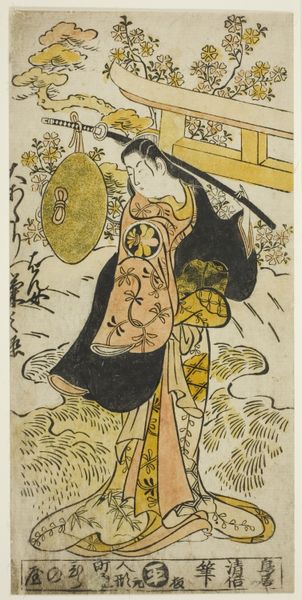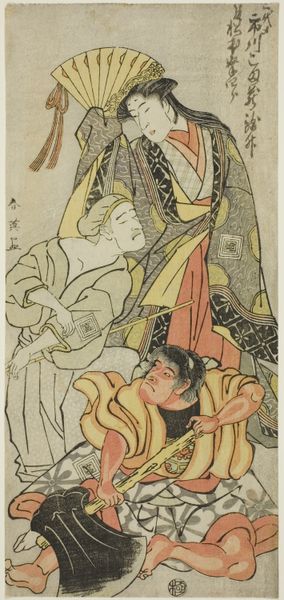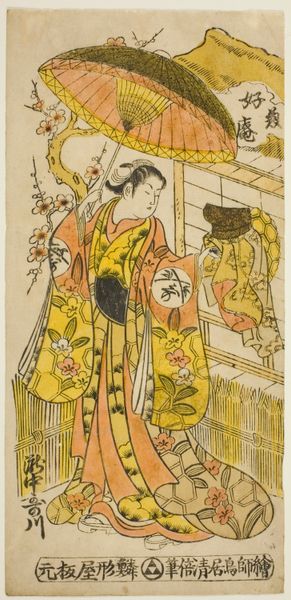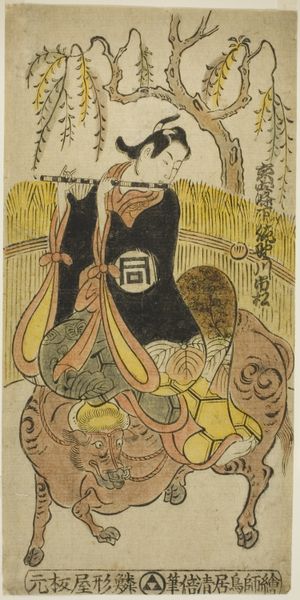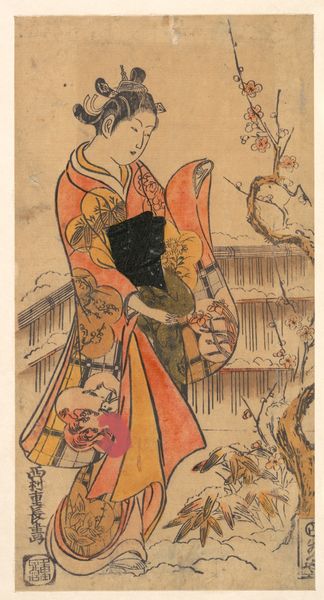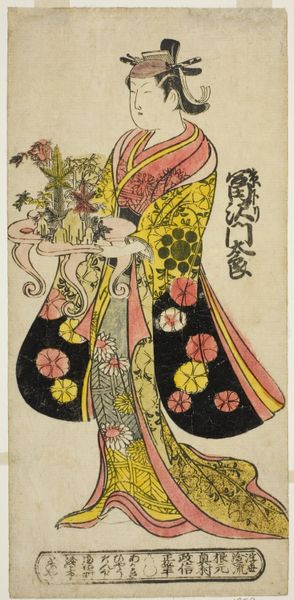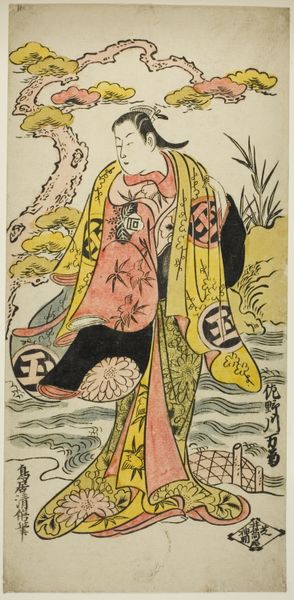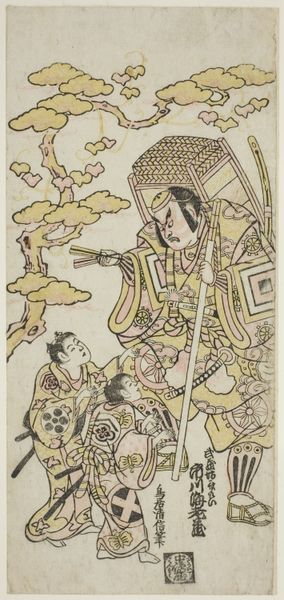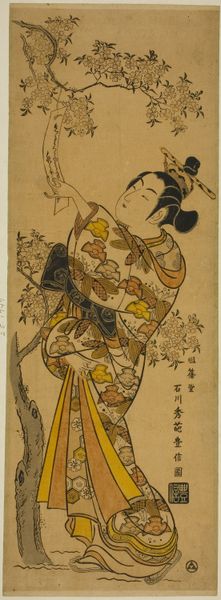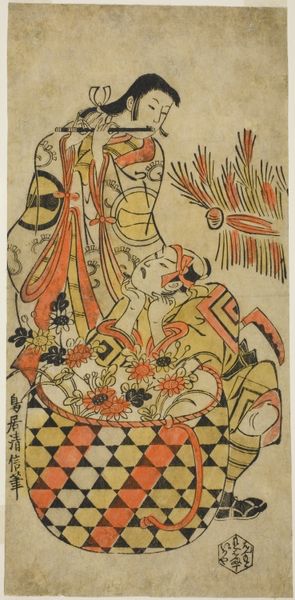
print, woodblock-print
#
ink drawing
#
narrative-art
#
ink painting
# print
#
asian-art
#
ukiyo-e
#
japan
#
figuration
#
woodblock-print
#
orientalism
Dimensions: 30.2 × 14.7 cm (11 3/4 × 5 3/4 in.)
Copyright: Public Domain
Curator: This fascinating print from around the 1730s is titled "A Modern Version of Urashima Taro" by Torii Kiyomasu II. It’s a woodblock print, a medium incredibly popular in the Ukiyo-e movement of Japan. Editor: My first thought is about the stillness of this image. Despite depicting what I understand to be a fantastical scene, there's an undeniable sense of quietude, perhaps even melancholy, in the figures' expressions. Curator: The artist plays with familiar iconography, turning the folktale of Urashima Taro on its head. Urashima Taro is the story of a fisherman who saves a turtle and is rewarded by being taken to the Dragon Palace. Instead of a fisherman riding a turtle, here we have two figures adorned in elaborate dress, riding atop what seems like a monstrous, sea creature-like turtle. The reversal suggests commentary on class and expectation. Editor: The roles are certainly subverted here. And I see the overt symbolism of wealth and power at play in those elaborate garments, which speak volumes about social hierarchy and the performance of gender in Edo-period Japan. Is the tale now a metaphor for social mobility or perhaps its limitations? The man up top holds some sort of pole...it is his former fishing rod? Curator: The fishing rod-like object definitely hints at the original narrative, keeping that link visible for audiences. The tale is usually presented as the consequence of opening the forbidden box after Urashima's visit to the underwater kingdom; he instantly ages because the gift he receives traps time. Editor: Opening Pandora's box always serves as a great framework for discussing power, especially as it concerns women, I'd argue, in almost every society. By associating the story with the characters shown, what commentary do you suppose the artist offered about societal perceptions of wealth? What kind of role did prints play as vectors for this information and the culture-shaping messaging therein? Curator: Prints were definitely key in the dispersal of that information—images traveling quickly and cheaply. Woodblock prints acted like early "memes" or social media posts! Editor: Fascinating, framing it that way helps one consider its real world impact for a broad range of people. In this image I recognize a blend of mythology and social commentary on societal mobility. Curator: I think this woodblock print really makes us consider how even fantastical stories can be bent to reflect very grounded societal concerns.
Comments
No comments
Be the first to comment and join the conversation on the ultimate creative platform.
